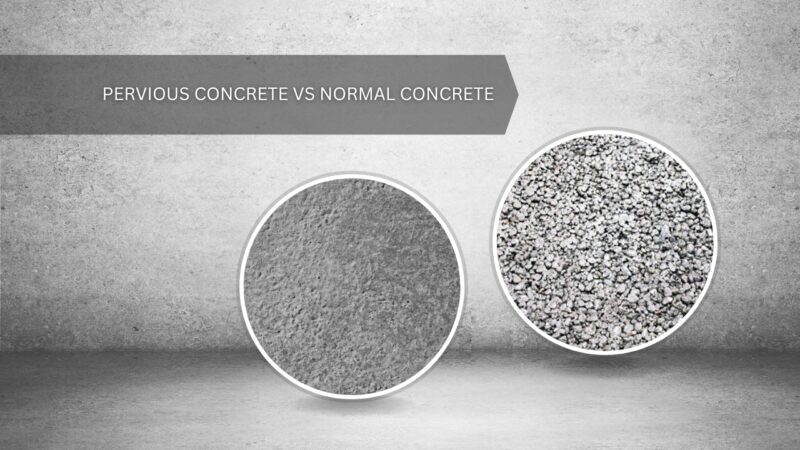In my journey as a civil engineer, I’ve come to appreciate the intricate dance of materials that make up our built environment. Concrete, a staple in the construction world, has been a constant companion.
However, as we pivot towards sustainable and resilient cities, we’re reimagining our relationship with this age-old material. Enter pervious concrete – a variant of the traditional that’s designed to allow water to pass through it.
In this article, I’ll explore the differences between normal and pervious concrete, their properties, applications, and environmental impacts.
Comparison of Aggregate Sizes
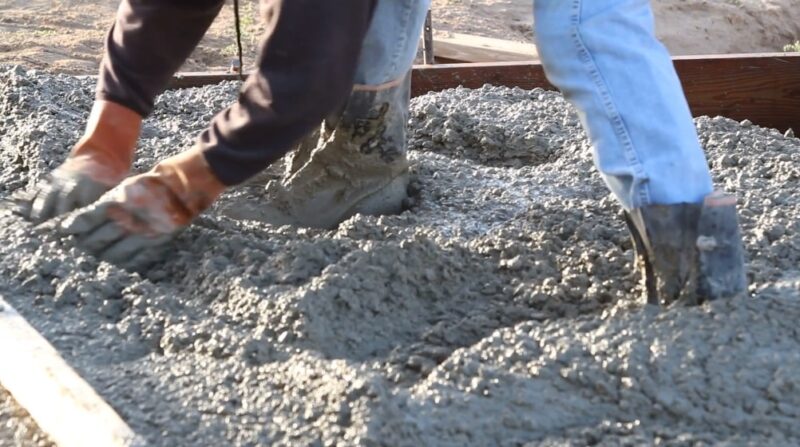
| Normal Concrete | Pervious Concrete | |
| Aggregate Size | Fine 75 µm – 9.5 mm | Coarse 9.5 mm – 19 mm |
| Description | The aggregate is typically composed of clean, hard, strong, and durable particles free of chemicals, coatings of clay, or other fine materials that could affect hydration. | It’s generally a composite of clean, hard, strong, and durable particles free of chemicals, coatings of clay, or other fine materials that could affect hydration. |
In normal concrete, the aggregate sizes are typically fine. This includes small bits of sand, gravel, or crushed stone. These fine aggregates allow for a dense, solid final product.
Pervious uses larger, coarser aggregates. This results in a more porous structure with visible voids, which are key to its unique properties.
Permeability and Porosity
Normal concrete is characterized by its low permeability. It’s designed to be a barrier, keeping water out (or in, depending on the application). This low permeability is a defining characteristic, making it suitable for structures that need to be water-resistant.
In stark contrast, pervious concrete is highly permeable. Water can flow right through it, thanks to its high porosity. This isn’t an accident – the high porosity is by design. It’s what allows water to pass through, reducing runoff and helping to manage stormwater.
However, this high porosity isn’t without its trade-offs. While it allows for better water management, it also impacts other properties of the concrete, such as its strength and durability. But these trade-offs are often worth it, considering the environmental benefits and unique applications.
Void Structure
The void structure in normal concrete is minimal. This is because the fine aggregates and cement paste fill in most of the gaps, creating a dense and solid structure. This minimal void content contributes to strength and durability, making it an excellent material for a wide range of construction applications.
Pervious concrete, on the other hand, is characterized by its open, interconnected voids. These voids are a result of the coarse aggregates used in the mix, which don’t pack together as tightly as the fine aggregates in normal concrete. This open void structure is what allows water to pass through pervious concrete, giving it its unique permeability.
The impact of these voids on the strength and durability of pervious concrete is significant. While they allow for excellent water permeability, they also reduce the overall strength of the material. This is a trade-off that must be considered when choosing.
Water Drainage and Stormwater Management
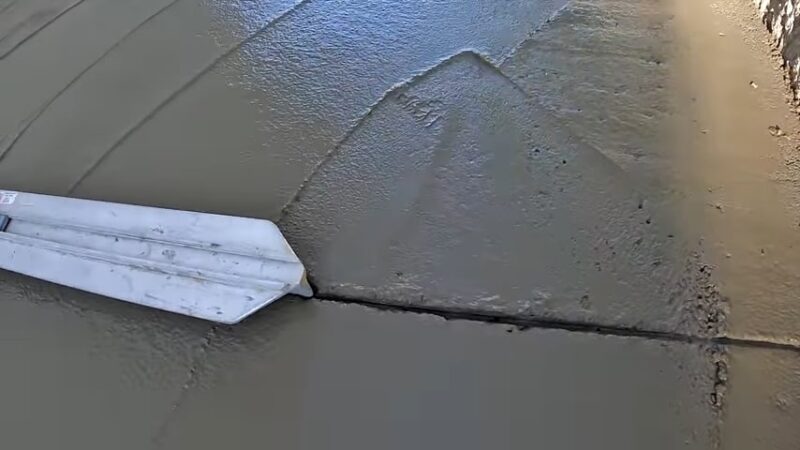
In normal concrete, water drainage is primarily surface runoff. Because of its low permeability, water can’t penetrate. Instead, it flows across the surface, often being directed to storm drains or other runoff management systems. This can lead to issues with flooding and water management, especially in urban areas with large amounts of impervious surfaces.
Pervious concrete, however, allows for water to infiltrate into the ground. The open, interconnected voids in the material let water pass through, reducing surface runoff and helping to recharge groundwater supplies. This can be a significant advantage in stormwater management, as it can reduce the burden on stormwater systems and help prevent flooding.
The advantages of pervious concrete in stormwater management are significant. By allowing water to infiltrate into the ground, it can help to reduce flooding, recharge groundwater supplies, and even improve water quality by filtering out pollutants. These benefits make it an attractive option for sustainable construction and urban planning.
Load-Bearing Capacity
The load-bearing capacity of normal concrete is high, thanks to its dense, solid structure. This makes it an excellent material for a wide range of construction applications, from building foundations to highway bridges. It’s able to withstand significant loads, making it a reliable and durable choice for many projects.
Pervious concrete, however, has a lower load-bearing capacity due to its voids. The open, interconnected voids in the material reduce its overall strength, making it less suitable for applications that require high load-bearing capacity. However, it’s still capable of handling moderate loads, making it an excellent choice for applications like driveways, sidewalks, and parking lots.
The appropriate applications for pervious concrete are those that can benefit from its unique properties, like permeability and stormwater management, without requiring high load-bearing capacity. It’s a material that offers a unique combination of benefits, making it a valuable tool in the pursuit of more sustainable and resilient cities.
Installation and Maintenance
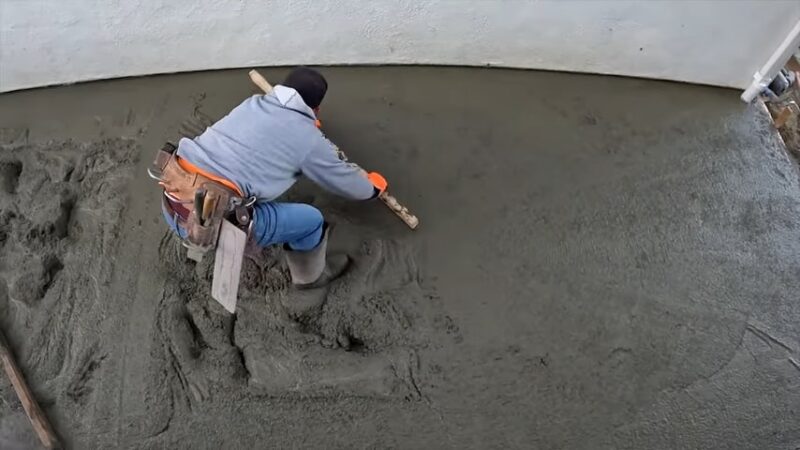
The installation process for normal concrete is relatively straightforward. It involves preparing the site, creating a formwork, mixing, pouring it into the formwork, and then allowing it to cure. This process can be labor-intensive and time-consuming, but it’s well-established and understood by most construction professionals.
Pervious concrete, on the other hand, requires some unique considerations during installation. The coarse aggregates used can make it more challenging to work with, and it requires careful handling to maintain the open void structure. The concrete must be poured and compacted in a way that preserves these voids, which can require specialized equipment and training.
Maintenance requirements for pervious concrete surfaces are also different from those for normal. Because of its permeability, it can become clogged with debris or sediment over time, which can reduce its effectiveness. Regular cleaning and maintenance are necessary to keep the voids open and maintain the permeability of the surface.
Environmental Benefits
The environmental impact of normal concrete production is significant and involves mining raw materials, transporting them to the production site, and then using energy-intensive processes to create. This can result in substantial greenhouse gas emissions and other environmental impacts.
Pervious concrete, however, offers several environmental benefits that can help to offset these impacts. One of the most significant is its ability to reduce the urban heat island effect. By allowing water to infiltrate into the ground, it can help to cool urban areas and reduce the amount of energy needed for air conditioning.
Another major environmental benefit of pervious concrete is its contribution to LEED certification. Its use can contribute to several LEED credits, including those for stormwater management, heat island reduction, and materials and resources. This can make it an attractive option for projects seeking to achieve LEED certification.
Applications
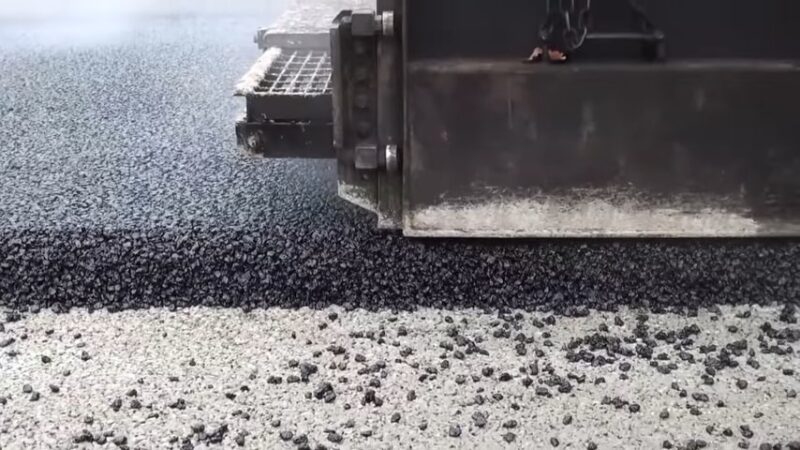
Normal concrete is commonly used in a wide range of construction applications, from building foundations to highway bridges. Its strength, durability, and versatility make it a go-to material for many construction projects.
Pervious concrete, however, is ideal for certain specific applications. Its permeability makes it an excellent choice for surfaces like driveways, sidewalks, and parking lots, where it can help to manage stormwater and reduce runoff. It’s also being used in more innovative applications, like green roofs and walls, where it can contribute to urban greening and biodiversity.
Limitations and Challenges
Despite its many benefits, pervious concrete does have some limitations. For instance, it may not be suitable for certain environments or climates. In areas with heavy rainfall, the high permeability can lead to excessive water infiltration, potentially causing issues with groundwater levels or soil stability. Similarly, in colder climates, the freeze-thaw cycles can cause damage to the material over time.
Another challenge for the widespread adoption of pervious concrete is its relatively lower strength compared to normal. This makes it less suitable for high-traffic or heavy-load areas. However, advancements in technology and material science are continually improving the strength and durability, making it a viable option for an increasing range of applications.
Lastly, the installation and maintenance of pervious concrete require specialized knowledge and equipment. This can increase the initial costs and may pose a barrier to its adoption, particularly for smaller projects or for contractors who are not familiar with the material.
Future Developments
The field of pervious concrete technology is rapidly evolving, with ongoing research and innovation aimed at improving its performance and expanding its applications. For instance, researchers are exploring ways to enhance the strength and durability, to make it suitable for a wider range of uses. They are also investigating methods to improve its resistance to freeze-thaw cycles, which could make it more viable in colder climates.
In addition, there is a growing interest in the potential of pervious concrete to contribute to sustainable urban development. For example, its ability to reduce stormwater runoff and urban heat islands is increasingly recognized as a valuable tool for urban planners and architects. As such, we can expect to see more and more applications of pervious concrete in the urban environment in the future.
For those interested in diving deeper into construction methodologies, this resource offers valuable insights.
FAQ
What are the latest trends in pervious concrete?
Include the use of recycled materials and the development of new admixtures to enhance its properties. There is also a growing interest in using pervious concrete in combination with other sustainable technologies, such as green roofs and rain gardens.
How does the cost compare?
While the initial cost of pervious concrete can be higher than normal , it can result in significant savings in the long term due to its ability to reduce stormwater runoff and the associated costs of stormwater management.
Can pervious concrete be used in cold climates?
While it can be susceptible to damage from freeze-thaw cycles, ongoing research is exploring ways to improve its resistance to these conditions. This includes the use of special admixtures and the development of new installation techniques.
What is the lifespan of pervious concrete?
Can vary depending on factors such as the quality of the installation, the local climate, and the level of maintenance. However, with proper installation and maintenance, it can last for many years.
Can pervious concrete be colored or stamped like normal?
Yes, it can be colored or stamped to create a variety of aesthetic effects. This makes it a versatile choice for applications such as driveways, sidewalks, and patios.
Conclusion
In conclusion, pervious concrete presents a unique and innovative solution to many of the challenges faced by traditional concrete. Its high permeability and porosity, coupled with its unique void structure, make it an excellent choice for stormwater management and water drainage.
Despite its lower load-bearing capacity, it finds its niche in applications such as driveways, sidewalks, and parking lots. The installation and maintenance of pervious concrete, while requiring specialized knowledge, are offset by its significant environmental benefits.
As we look towards the future, ongoing research and innovation promise to further enhance the properties and potential applications of pervious concrete, making it an increasingly attractive choice for sustainable construction practices.
